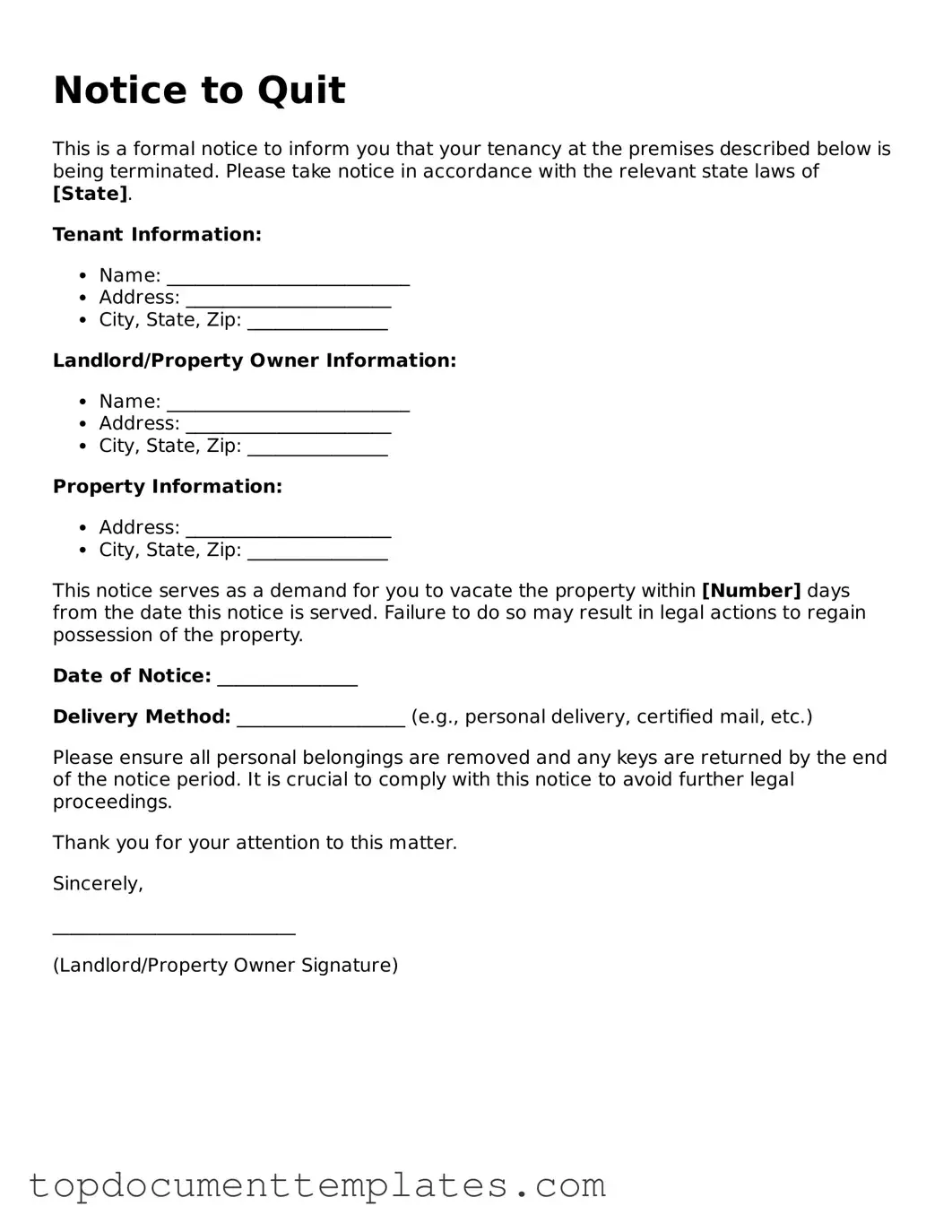The Notice to Quit form plays a critical role in the landlord-tenant relationship, serving as a formal communication tool that initiates the process of eviction. This document outlines the landlord's intent to terminate a lease agreement, providing tenants with essential information about the reasons for the termination and the timeframe in which they must vacate the premises. Typically, the form specifies the type of violation—such as non-payment of rent, lease violations, or other breaches of contract—that has prompted the notice. Additionally, it includes key details such as the date of issuance, the address of the rental property, and the signature of the landlord or their representative. Understanding the nuances of this form is vital for both landlords and tenants, as it establishes legal grounds for eviction proceedings and ensures compliance with state and local laws. By properly utilizing the Notice to Quit form, landlords can protect their property rights while tenants are afforded the opportunity to address issues before facing potential eviction. Ultimately, this document serves as a bridge between the rights and responsibilities of both parties, highlighting the importance of clear communication in maintaining a harmonious rental relationship.
